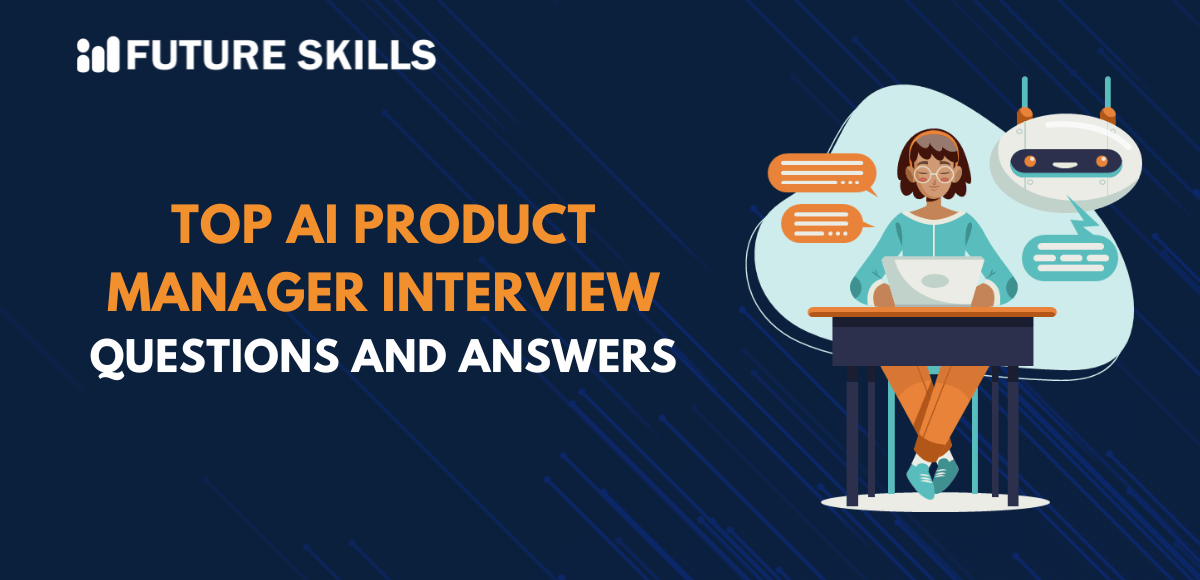Diffusion models have garnered a lot of attention in recent times for their impressive capabilities. You must have come across some of the popular examples of diffusion models such as DALL-E 2 and Midjourney. Every diffusion model example showcases how diffusion models can enhance the use of AI for innovation. Years of machine learning research have led to perfection in diffusion models.
Diffusion models can generate high-quality images, video, and other types of content. The primary working principle of diffusion models involves reversal of the diffusion process. As diffusion models gain more popularity with the arrival of new tools, ML researchers and practitioners have become more curious about their capabilities. Let us learn the fundamental concepts of diffusion models and understand how they work.
Prepare yourself to expand your skillset with Certified AI Professional (CAIP)™ Certification. Learn the best problem-solving strategies in AI.
What is the Special Highlight of Diffusion Models?
The introduction of tools such as DALL-E 2, Midjourney and Stable Diffusion has shifted the limelight towards diffusion models. Before finding answers to queries like “What is diffusion models?” you must know that there are other generative models. Some of the notable generative models such as flow-based models, generative adversarial networks or GANs and variational autoencoders or VAEs can also generate high-quality images. Diffusion models are better than these generative models for generating synthetic data.
Diffusion models are popular generative models that can generate unique and high-quality data. The diffusion model working principle involves progressive addition of noise to datasets and training for reversal of the process. Diffusion models work through corruption of the training data by adding Gaussian noise followed by learning the data recovery process. The data recovery process involves reversal of the noise addition process.
The high-level overview of the working of diffusion models emphasizes gradual degradation of data quality and reconstructing data to the original form. After the training process, diffusion models can generate data from randomly sampled noise with the denoising process. The technique used by diffusion models helps in enhancing the quality of generated data such as images. As a result, diffusion models offer possibilities for promising enhancements in areas such as medical imaging.
Why Should the AI Community Pay Attention to Diffusion Models?
The simple overview of the working mechanism of diffusion models explained the driving forces behind their capability to generate high-quality images. Diffusion models mark a major milestone in the evolution of generative AI capabilities. They have become powerful due to,
- Years of progress in machine learning techniques.
- Availability of better and powerful hardware.
- Easier access to large image datasets.
The global AI community must pay attention to diffusion models for their strikingly advanced capabilities. Diffusion models have outperformed their predecessors, such as GANs, on different parameters. They can generate more realistic images as compared to Generative Adversarial Networks. Diffusion models also offer the assurance of better stability than GANs without the concerns of mode collapse.
The broad range of diffusion model AI applications is another reason to prioritize research on evolution of diffusion models. As of now, diffusion models can achieve better diversity in image generation than Generative Adversarial Networks. Users can also condition diffusion models for accepting diverse types of inputs to employ them in many practical use cases.
Deep Dive into the Working of Diffusion Models
The growing adoption of diffusion models has created more interest in their working mechanisms. How do diffusion models generate realistic images in different styles? The diffusion model working mechanism involves two distinct phases. The first phase involves training a neural network for introducing noise in the existing dataset and the second phase focuses on systematic reversal of the process.
Before introducing noise in the existing datasets, diffusion models rely on data preprocessing. It helps in formatting data for the model training process. Data preprocessing focuses on the following important tasks.
- Data cleaning helps in removing outliers.
- Data augmentation supports enhancements in dataset diversity.
- Normalization techniques provide the foundation for consistent feature scaling.
Standardization also plays a major role in data preprocessing for different types of diffusion models to ensure normal data distribution. The effectiveness of data preprocessing helps in preparing high-quality training data. Data preprocessing ensures that the model can infer meaningful patterns from the training data to generate better images.
Forward Diffusion Process
The forward diffusion process starts with sampling from a Gaussian data distribution. Most of the answers for “What is diffusion models?” describe the forward diffusion process as the process of adding noise. The selected sample would have to go through a successive sequence of reversible modifications. Each step of the sequence of modifications introduces complexity in a controlled manner by leveraging a Markov chain.
The gradual addition of different layers of complexity represents the introduction of structured noise in the dataset. Diffusion of initial data with these sequential transformations help the model in capturing and reproducing complex details and patterns that you can discover in target distribution. The objective of forward diffusion is to transform the initial samples into data that is almost similar to the complex data distribution you need in the output.
Reverse Diffusion Process
The second phase in the working of a diffusion model or reverse diffusion makes them better than other generative models. The high-fidelity in output of diffusion model AI applications can be attributed to the reverse diffusion process. Reverse diffusion involves the recognition of noise patterns or complexities added at each step. Another important part of reverse diffusion is the training of neural networks to remove noise in the data.
At the high level, the reverse diffusion process seems extremely simple. However, it relies on a complex reconstruction process with the help of a Markov chain. The diffusion model uses the acquired knowledge for prediction of noise in each step and ensures careful removal of noise.
Dive into the best practices of applying AI to your business to grow a successful business in this digital world with our AI for Business Course.
Exploring New Horizons of AI with Applications Diffusion Models
The primary application of diffusion models is the generation of images. Digital art creators can leverage different types of diffusion models to transform text into detailed and visually appealing images. Diffusion models can expand the horizons of creative expression and break the barriers between art and technology. Creators can explore new ideas which seem difficult to achieve in the following domains.
Digital Artwork Design
Digital artwork or graphic design has taken a massive leap forward with diffusion models. Designers can use sketches or layouts and textual descriptions of their ideas to craft complete and refined images. Diffusion models can not only improve the pace of the graphic design process but also provide a wide range of possibilities for transforming the initial concept into the final output.
Gaming and Multimedia
The gaming and multimedia industry can also harness the capabilities of diffusion models to achieve different benefits. A diffusion model example for the gaming industry can show how the models can generate characters, in-game assets and detailed environments. Diffusion models allow creators to breathe life into imaginary concepts with artistic freedom, precision and efficiency.
Film and Animation
The applications of diffusion models for film and animation showcase another creative approach to embrace the models in real projects. Creators can use diffusion models to create different elements of visual storytelling with better efficiency than traditional methods. One of the most notable examples of diffusion model working in film and animation is that of an artist who used Stable Diffusion algorithms to create a full AI animation film. Less than two minutes in length, the film represents the beginning of a new era of collaboration between AI and artists.
Is It Possible to Use Diffusion Models for Predictive Analytics?
The use cases of diffusion models for graphic design, film and animation and gaming industry reveal that they are ideal for creative tasks. Interestingly, you can also use diffusion models for predictive analytics. Diffusion models can accommodate complex and non-linear data patterns which are difficult to understand for simpler models.
Diffusion models stand out as the ideal choices for adapting to the rapidly evolving and dynamic datasets. McKinsey has reported that diffusion models can enhance revenue by 10% to 15% with access to better insights for informed decision making.
Unravel the Limitations of Diffusion Models
Diffusion models might seem to be the most powerful generative AI models in the market right now. Even with all the power, diffusion models have limitations. The applications of diffusion models explained their strength. You must also learn about the limitations of diffusion models to use them in the best way possible.
The foremost limitation of diffusion models is the possibility of face distortion. Diffusion model outputs may have distorted faces when you have more than three subjects.
Another notable setback with diffusion models is the inability to add text in image accurately according to the prompts.
The most critical limitation of diffusion models is the requirement of verbose prompts to generate high-quality images. You cannot describe diffusion models as the ideal tools for productivity as they require a lot of instructions to generate the desired output.
Final Words
The introduction to diffusion models emphasized the transformative impact of such models on the AI landscape. The diffusion model AI revolution has overshadowed existing generative models such as Generative Adversarial Networks in image generation tasks. Diffusion models work by adding structured noise to datasets and training the neural network to remove noise and recover the original data. The unique process helps in generating synthetic data according to user prompts or instructions.
Diffusion models have been gaining popularity and it is a matter of time before they rule the AI landscape. As of now, tools such as Midjourney and DALL-E 2 have proved that diffusion models are here to stay. Learn more about the most popular tools that use diffusion models and experiment with their capabilities.
Enroll in our accredited AI Certification Course that will give you a head start and transform your career to help you reach your career goals.






